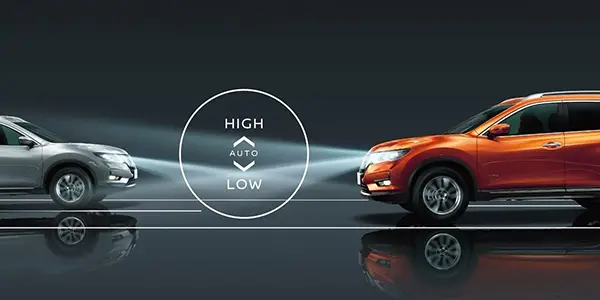How does a car’s automatic high beam control work?


How does a car’s automatic high beam control work?
Driving at night can be challenging, especially when it comes to visibility. To address this issue, car manufacturers have developed automatic high beam control systems as part of the vehicle lighting system. These systems, also known as smart headlights or high beam assist, use advanced automotive technology to enhance night driving safety. In this article, we will explore how a car’s automatic high beam control works and its benefits for drivers.
What is automatic high beam control?
Automatic high beam control is a feature in modern cars that allows the headlights to switch between high and low beams automatically. This system uses headlight sensors to detect oncoming vehicles or vehicles ahead and adjusts the headlights accordingly. By doing so, it ensures that the driver has optimal visibility without causing discomfort or glare to other drivers.
How do headlight sensors work?
Headlight sensors are a crucial component of the automatic high beam control system. These sensors are typically located on the front of the vehicle and use various technologies to detect other vehicles on the road. Some common technologies used in headlight sensors include:
1. Infrared sensors: These sensors emit infrared light and measure the reflection to detect objects in front of the vehicle. They can accurately detect the presence of other vehicles and determine their distance.
2. Light-sensitive sensors: These sensors measure the ambient light levels and adjust the headlights accordingly. When the sensors detect low light conditions, they activate the high beams. Conversely, when they detect oncoming vehicles or bright lights, they switch to low beams.
How does automatic high beam control work?
Now that we understand the role of headlight sensors let’s delve into how automatic high beam control works:
1. Detection: When the car’s automatic high beam control system is activated, the headlight sensors start scanning the road ahead. They detect the presence of other vehicles, including oncoming traffic and vehicles ahead of the car.
2. Analysis: Once the sensors detect other vehicles, they analyze the distance and position of these vehicles. This analysis helps determine whether the high beams need to be activated or switched to low beams.
3. High beam activation: If there are no oncoming vehicles or vehicles ahead, the automatic high beam control system activates the high beams. This provides the driver with maximum visibility, especially in poorly lit areas.
4. Low beam activation: When the sensors detect oncoming vehicles or vehicles ahead, the automatic high beam control system switches to low beams. This prevents glare and ensures the safety of other drivers on the road.
5. Adaptive lighting: Some advanced automatic high beam control systems also offer adaptive lighting. This feature allows the headlights to adjust their beam pattern based on the road conditions and the speed of the vehicle. For example, when driving on a curved road, the headlights may adjust to provide better illumination around the bend.
Benefits of automatic high beam control
The automatic high beam control system offers several benefits for drivers, including:
1. Improved visibility: By automatically switching between high and low beams, the system ensures that the driver has optimal visibility at all times. This is particularly useful in poorly lit areas or during adverse weather conditions.
2. Enhanced safety: The automatic high beam control system improves safety by preventing glare to other drivers. By switching to low beams when necessary, it reduces the risk of accidents caused by impaired visibility.
3. Convenience: With automatic high beam control, drivers no longer need to manually switch between high and low beams. The system takes care of this task, allowing the driver to focus on the road ahead.
4. Energy efficiency: By using high beams only when necessary, the automatic high beam control system helps conserve energy. This can result in improved fuel efficiency and reduced environmental impact.
In conclusion, a car’s automatic high beam control system is a valuable feature that enhances night driving safety. By using headlight sensors to detect other vehicles, the system automatically switches between high and low beams, providing optimal visibility without causing glare to other drivers. This technology not only improves safety but also offers convenience and energy efficiency benefits. So, the next time you drive at night, you can rely on your car’s automatic high beam control system to ensure a safer and more comfortable journey.
Recent Posts
How do I create an engaging and informative online quiz or assessment?
Creating an engaging and informative online quiz or assessment can be a powerful tool for… Read More
What are the most effective methods for managing and reducing work-related stress in the hospitality industry?
Work-related stress is a common issue in the hospitality industry, where employees often face long… Read More
How can I improve my assertiveness and communication skills in a leadership position?
In a leadership position, assertiveness and effective communication skills are crucial for success. Being able… Read More
What are the key elements of a successful employee recognition and rewards program?
Employee recognition and rewards programs play a crucial role in motivating and engaging employees, as… Read More
How do I effectively manage and respond to customer feedback and reviews?
Customer feedback and online reviews play a crucial role in shaping a company's reputation and… Read More
What are the best strategies for effective time management as a stay-at-home parent?
Effective time management is crucial for stay-at-home parents who juggle multiple responsibilities on a daily… Read More